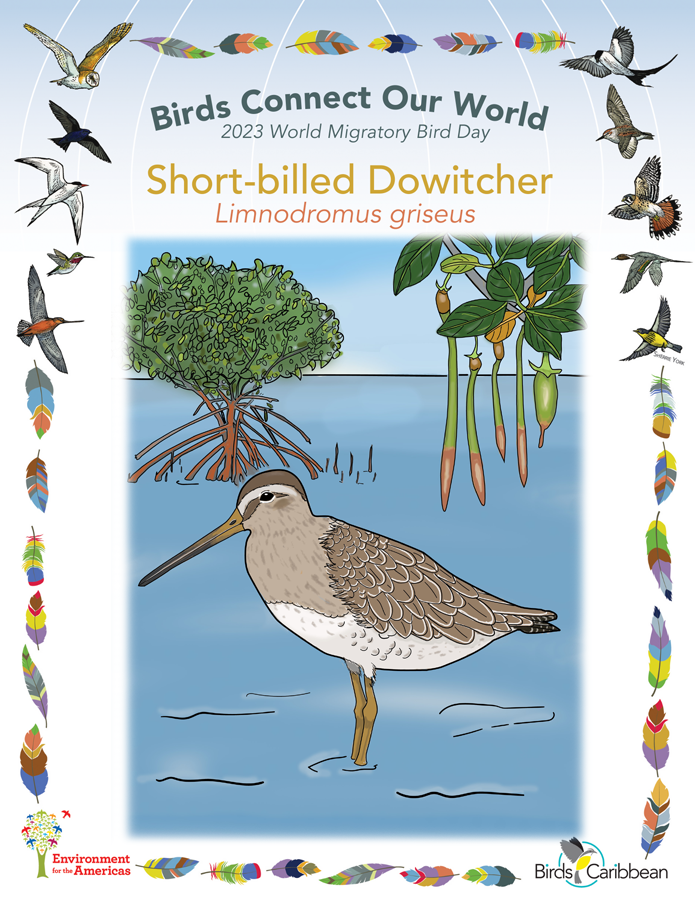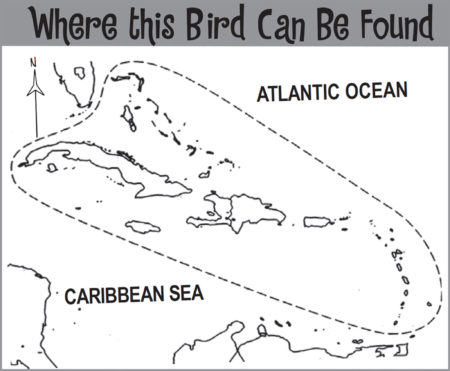Celebrate World Migratory Bird Day (WMBD) with us in 2023! This year’s theme is “Water: Sustaining Bird Life”. Have fun learning about a new migratory bird every day. We have coloring pages, puzzles, activities, and more. Download for free and enjoy nature with your family at home.
Migratory Bird of the Day: Short-billed Dowitcher
Sometimes bird names can be confusing—and in the case of the Short-billed Dowitcher, frankly, misleading! This medium size migratory shorebird most definitely has a LONG bill. So how did it get its odd name?
Dealing with the “Short-billed” part first, this bird has a closely related and very similar looking relative—the Long-billed Dowitcher. They have a very slightly longer bill than the Short-billed Dowitcher—a difference so subtle that it is hard to spot. Yet, these names were meant to distinguish between the two birds! In fact, the calls of these two cousins are actually the best way to tell them apart, especially when in non-breeding plumage. The Short-billed Dowitcher gives a soft “tu-tu-tu” call in contrast to the strident “keek” of the Long-billed. But it seems that the “Tu tu Dowitcher” wasn’t considered a suitable name.
Moving on to the “Dowitcher” part of the name, this is also a bit of a mystery—what does Dowitcher even mean? In the late 19th century, this bird was being hunted in North America. It seems as if Dutch and German immigrant hunters perhaps referred to them as “Deutscher” or “Duitsch” snipe (i.e. “German” or “Dutch” snipe). This may have then become “dowitcher” or “dowitch”.
Short-billed Dowitchers do have a snipe-like appearance with long straight bills, short-ish legs and a somewhat plump appearance. In breeding plumage they have mottled brown snipe-like plumage above, with pale cinnamon-brown below. In non-breeding plumage they are brownish-gray above, with a paler belly and greenish yellow legs.
Short-billed Dowitchers breed in boggy areas at the margins of boreal forests in northern Canada. They travel thousands of kilometers in Fall, stopping along the way to molt and mainly sticking to the coastline as they head south. In the Caribbean, they can be spotted in a wide range of habitats from beaches, to tidal mudflats, to flooded agricultural areas. Look out for their distinctive “sewing-machine” feeding motion, as small groups of dowitchers with their heads down plunge their bills up and down into the water and mud looking for worms and mollusks.
Short-billed Dowitcher populations are declining and the species is on the USFWS list of “Birds of Conservation Concern”. Protecting our Caribbean wetland habitats and reducing the use of insecticides (which will reduce their food sources) can help us provide places for this oddly-named bird to thrive during its migration. Learn more about this species, including its range, photos, and calls here.
Thanks to Alex Sansom for the text and Christine Elder for the lovely illustration!
Color in the Short-billed Dowitcher
Download the Migratory Birds of the Day Coloring Page! Use the picture above and the photos on this page as your guide, or look up pictures of the bird online or in a bird field guide if you have one. Share your colored-in page with us by posting it online and tagging us @BirdsCaribbean #WMBD2023Carib
Listen to the calls of the Short-billed Dowitcher
Short-billed Dowitchers make a soft “tu-tu-tu” call, often as a contact call when flying together.
Puzzles of the Day
Click on the images below to do the puzzle. You can make the puzzle as easy or as hard as you like—for example, 6, 8, or 12 pieces for young children, all the way up to 1,024 pieces for those that are up for a challenge!
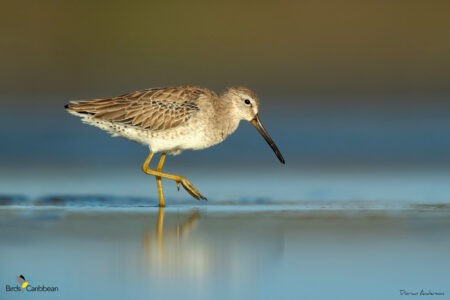
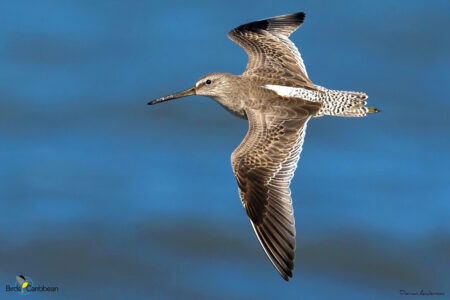
Activity of the Day
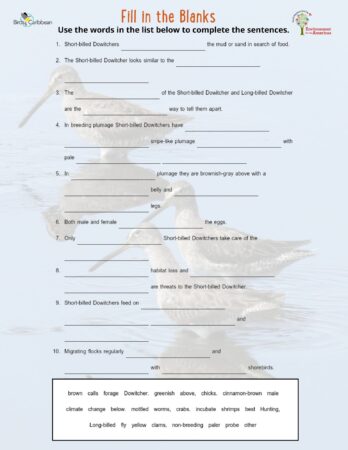 FOR KIDS: What facts can you remember about today’s migratory bird—the Short-billed Dowitcher? Test your knowledge by filling in the missing words in our Short-billed Dowitcher facts! We have given you all the correct words to use but can you put them into the right places in these fact-filled sentences?
FOR KIDS: What facts can you remember about today’s migratory bird—the Short-billed Dowitcher? Test your knowledge by filling in the missing words in our Short-billed Dowitcher facts! We have given you all the correct words to use but can you put them into the right places in these fact-filled sentences?
You can re-read the information about this bird above, or search on the BirdsCaribbean webpages or online for more information about the Short-billed Dowitcher! You can also look at the photos, illustration and videos on this page to help you. When you have completed all the sentences, you can check your answers here.
FOR KIDS AND ADULTS: Enjoy these videos of Short-billed Dowitchers in the wild! The first video shows bird feeding with their typical “sewing machine” foraging action, plunging their bills into the mud for worms. In the second video, you can see a flock of Short-billed Dowitchers in flight.
Learn all about how to tell a Short-billed Dowitcher from a Willet: Shorebirds can be tricky to identify, especially as they migrate through the Caribbean in their non-breeding plumage (which is often less distinctive than their breeding plumage). Short-billed Dowitchers and Willets are both commonly seen in the Caribbean in Fall, and both are long-billed and gray-ish brown—so how can we tell them apart? Find out in this blog post from bird guide Allison Caton from Grenada, who got the low-down whilst attending a week-long BirdsCaribbean, Caribbean Birding Trail (CBT) Interpretive Guide Training Workshop on Union Island in St. Vincent & the Grenadines.

